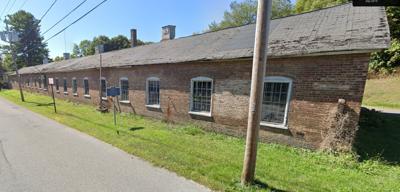Responding to Gov. Hochul’s recent calls for affordable housing, a number of municipalities have initiated plans to construct new as well as repurpose older properties into workforce and senior apartments.
Among the plans are recent public and private proposals in Coxsackie to use funds from the village’s recently received NY Forward grants to convert places like the Department of Public Works into 68 mixed-income, artist and affordable apartments, renovate 7 Ely St. into affordable, medium-term housing for 25 to 30 writers and rehabilitate 9-11 Mansion St. and 2-6 Reed St. into mixed-use retail with affordable housing on the second floor.
In Tannersville, the nonprofit Hunter Foundation is using funds from its $10 million NY Downtown Revitalization Initiative grant to spearhead the construction of workforce housing with RUPCO Homes and Community Renewal, a charter member of national nonprofit NeighborWorks America.
The nonprofits will be building a 56-unit housing building on a 5.9-acre parcel at 124 Main St., once the site of the Cold Spring Hotel. The old hotel will be razed to make way for the new project, which has not yet been awarded to a contractor.
Hunter Foundation Executive Director Sean Mahoney said the additional residents in the village, which he predicts will number just north of 150, should not pose a burden on the community’s resources or schools.
“The hope is that people who already live here but are living in housing that’s too expensive or substandard will move into the RUPCO workforce housing which will provide a better situation for them,” said Mahoney. “We expect the new building to have great amenities and to be super-efficient. If there are additional people that want to move into the village that have children, the school population within the past 20 years has declined, so it would be good to get those numbers back up.”
Mahoney added that affordable workforce housing was something many people in the community had asked for.
“The DRI is a huge boon for the village of Tannersville, not only including the affordable housing project but many other economic development projects that we have slated to be funded,” said Mahoney.
Hudson Mayor Kamal Johnson said he has hopes of converting some properties currently underused or altogether abandoned into housing.
“The two that come to mind right away would be the John Edwards School on State Street and the St. Mary’s Old School on Allen Street,” said Johnson. “Nothing is happening in the John Edwards School. The district has it on the market for sale, though it would need rezoning. St. Mary’s hosts voting headquarters, and there’s some programming that happens there every now and then, but basically it’s vacant.”
Johnson said that the Charles Williams School on Third and Robinson, although seeming to be in a state of disrepair from the outside, is used by the nonprofit Arts Organization, Second Ward Foundation.
“The city is absolutely interested in the John Edwards and St. Mary’s properties for a multitude of reasons. If possible, either way, I would love to see something happen to them with a priority on housing,” Edwards said.
Jim Fenton, a historian and researcher employed by the Columbia County Historical Society, said the county is home to a number of older buildings that no longer serve the function for which they were built. The question, he said, is whether the cost of the updates necessary to convert them to housing outweigh the benefits.
“I’m thinking in particular of the old mill buildings,” Benton said. “The ‘Gimp Mill’ in Valatie is in really bad shape and would probably cost more to rebuild than to tear down and build new. I know upstream from Philmont there’s a wonderful big, old mill, but I can’t tell you what it would take to rehab it and include the kinds of services needed for housing. These buildings I’m talking about were built in the 19th century and may not be conducive to anything other than being a mill. I’ve visited mills around the country, and the places are rarely converted to housing. At what point does it become too much money to make something it wasn’t intended to be? A mill built in the 1840s literally has no provision for heat. The workers would stay warm by working. And a mill has huge windows. The windows are enormous. Nowadays they let in the cold. It’s not to say it can’t be done. If there was some kind of commitment to save historic buildings, especially mills, if you could turn them into living quarters, I’d be thrilled. Any historian would.”
Greene County Administrator Shaun Groden said, in the past, counties would have the option of auctioning larger, abandoned commercial properties delinquent in their tax payments.
These properties, Groden said, would become part of a county’s land bank and would have the potential to go through rehabilitation or be converted to housing.
“We typically would get 50 to 75 properties that would go through auction,” said Groden. “But a Supreme Court in Minnesota’s decision this past spring put a halt to auctions.”
Groden said the court unanimously decided in the case that local governments seeking forfeiture of property as compensation for a public debt may not profit from the property’s sale beyond the amount the person owes.
The Greene County Treasurer’s Office and the Assessors’ Office said they could not respond to requests for data on the number of county residents seriously delinquent in their tax payments.
This story has been updated with additional details from Jim Fenton, a historian and researcher employed by the Columbia County Historical Society.









